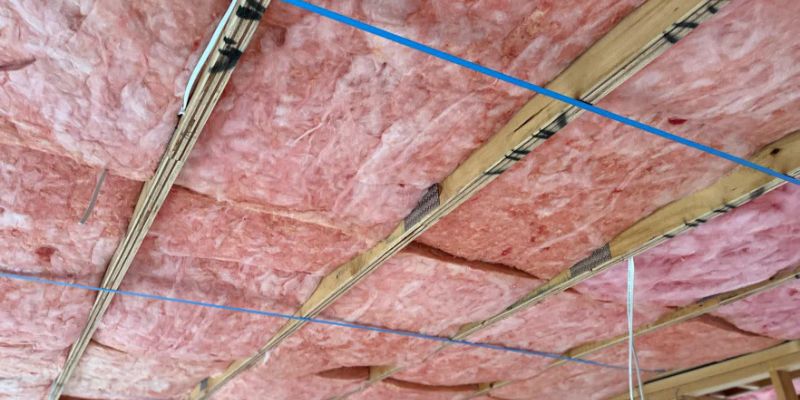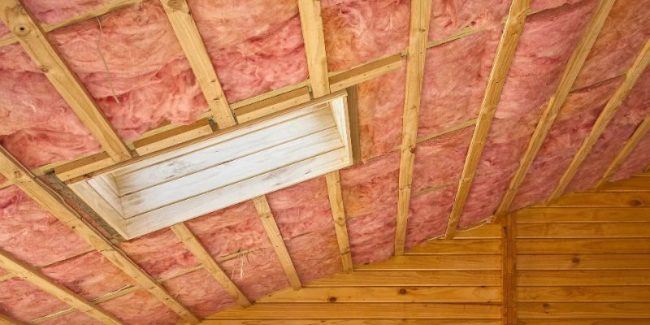Flat roof insulation is one of the best ways to keep your home warm, reduce energy bills, and make your living space more comfortable. In Ireland, where the weather can be cold, windy, and wet for much of the year, good insulation is not just a luxury—it is a necessity. If you own a home or building with a flat roof, proper insulation can make a big difference to your comfort and your heating costs.
In this article, we will explain what flat roof insulation is, why it is important in Ireland, the benefits it brings, and what you should consider before getting it done.
What is Flat Roof Insulation?
Flat roof insulation is a layer of insulating material added to the roof structure to reduce heat loss and control indoor temperatures. It can be installed either:
-
Above the roof deck (known as warm roof insulation)
-
Below the roof deck (known as cold roof insulation)
For Irish weather conditions, warm roof insulation is often preferred because it keeps the entire roof structure warm and prevents condensation problems.
Why Flat Roof Insulation Matters in Ireland

Ireland has a mild but wet and windy climate. Winters are often damp and chilly, while summers are mild. Without proper insulation, flat roofs can allow heat to escape easily in winter and let in heat during warmer days. This means:
-
You may spend more on heating bills.
-
Your home may feel cold and uncomfortable.
-
Moisture problems, such as condensation, can occur.
With the right insulation, you can maintain a steady temperature inside, keep out drafts, and protect your building from weather damage.
Benefits of Flat Roof Insulation in Ireland
1. Better Comfort
Insulating your flat roof means the heat stays inside during the winter and outside during the summer. This keeps your rooms warmer in cold months and cooler in warmer months, creating a comfortable indoor environment all year round.
2. Lower Energy Bills
Heating a poorly insulated home in Ireland can be expensive. By adding insulation, your heating system will not need to work as hard, which reduces your energy usage and saves you money every month.
3. Prevents Heat Loss
Flat roofs without insulation can lose a significant amount of heat. Insulation creates a barrier that stops heat from escaping, helping you get the most from your heating system.
4. Reduces Carbon Footprint
Using less energy to heat your home means fewer carbon emissions. By insulating your flat roof, you are helping the environment and contributing to Ireland’s sustainability goals.
5. Protects Against Condensation
In Ireland’s damp climate, condensation can form when warm air meets a cold surface, leading to damp patches, mould, and even structural damage. Good insulation prevents these issues by keeping the roof temperature consistent.
6. Increases Property Value
Energy efficiency is a big selling point for Irish homes. Buyers are willing to pay more for houses with lower running costs. Flat roof insulation can make your property more attractive in the market.
How Flat Roof Insulation Works
The main purpose of insulation is to create a thermal barrier. This barrier slows down the movement of heat, so less warmth escapes from inside during winter, and less heat enters during summer.
In Ireland, rigid insulation boards such as PIR (polyisocyanurate) or mineral wool are commonly used. These materials provide excellent thermal resistance and are durable in wet weather conditions.
Choosing the Right Type of Insulation
There are two main approaches:
-
Warm Roof Insulation – The insulation is placed on top of the roof deck and below the waterproof layer. This method keeps the roof structure warm and prevents condensation. It is often the preferred option in Ireland.
-
Cold Roof Insulation – The insulation is installed between the joists, below the roof deck. While cheaper, it may not be as effective in preventing condensation in the Irish climate.
It’s important to choose the right type based on your budget, building design, and local climate conditions.
The Installation Process
A typical flat roof insulation process in Ireland may involve:
-
Inspection – A professional checks the roof for leaks, damage, or structural issues.
-
Preparation – Any existing problems are repaired before insulation is added.
-
Installation – The chosen insulation material is installed, either above or below the roof deck.
-
Sealing and Waterproofing – The roof is covered with a waterproof membrane to protect against rain and wind.
Maintenance and Longevity
Once installed, flat roof insulation requires very little maintenance. However, it is important to check the roof regularly for signs of wear, damage, or leaks, especially after storms. Properly installed insulation can last for decades.
Government Grants and Support in Ireland

The Sustainable Energy Authority of Ireland (SEAI) offers grants to homeowners for insulation work, including roof insulation. These grants can help cover part of the cost, making the upgrade more affordable. Checking the latest SEAI schemes before starting your project can save you money.
Conclusion
Flat roof insulation in Ireland is a smart investment that improves comfort, saves energy, and protects your home. Given Ireland’s damp and changeable weather, having a well-insulated flat roof means warmer winters, cooler summers, and lower bills.
If you are planning to insulate your flat roof, choose quality materials, work with experienced professionals, and explore available grants. The result will be a warmer, more efficient home that benefits both you and the environment.
FAQs
1. How much does flat roof insulation cost in Ireland?
Costs vary depending on the size of the roof, type of insulation, and labour charges. Grants from SEAI can help reduce the cost.
2. How long does flat roof insulation last?
With proper installation, insulation can last 25–40 years or even longer.
3. Can I insulate my flat roof myself?
It’s possible, but not recommended. Professional installation ensures proper sealing and avoids condensation problems.
4. Does insulation stop roof leaks?
Insulation alone does not fix leaks. Any leaks should be repaired before installing insulation.

